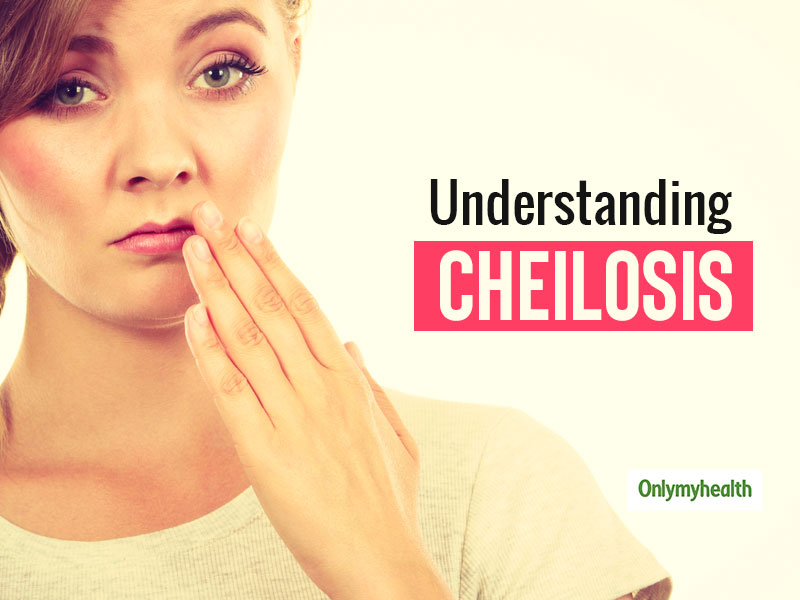
Cheilosis also is known as Angular cheilitis, or perleche is an inflammation that leads to red patches in the corners of your lips. It can happen either on one side of the mouth or on both sides at the same time. This isn’t a disease but a symptom of an underlying condition. The treatment depends on how severe it is. Some may be painful, and some may be serious. If you notice the spots and it doesn’t go away after ten days, you should consult a dentist. They don’t spread beyond the corners of the mouth, but if it gets severe, then the infection can spread.
Table of Content:-

Symptoms Of Cheilosis
The symptoms depend on the issue depending upon how much the infection has spread. Some of them are:
- Spots that look red or purple around the corner of the lips.
- Irritation, pain and burning sensation at the corner of the lips
- Swelling around the lips
- Cracks
- Dry and chapped lips
- Bleeding and blistered
- Difficulty eating
Also Read: Not So Sweet In Nature, Sweet’s Syndrome Is A Rare Skin Disorder, Explains Dr Rahul Arora
Causes of Cheilosis

This spread can cause several reasons. The most common cause is a yeast infection developed by saliva. The saliva accumulates around the corner of the mouth, and when it is dried, the skin around your mouth becomes dried and irritated. The moisture around your lips is created by licking their lips that can cause dryness and irritation, and the fungus grows. The growing of fungus or bacteria can cause infection which happens because of a yeast called Candida.
Risk Factors Of Angular Cheilitis
Cheilitis happens if the corners of your mouth are moist most of the time. This might happen due to braces, excessive saliva, sucking your thumb, smoking or having sagging skin around your mouth. Certain medical conditions can be a risk, such as:
- Diabetes: This weakens the immune system and increases the chances of yeast infection associated with cheilosis.
- Less immunity: Certain diseases like HIV or a chemotherapy treatment/drug can weaken and increase the risk of cheilitis.
- Genetics: A history of a genetic condition, such as Down syndrome can be a risk factor
- Lack of nutrition: Nutrition issues include anaemia or inadequate diet that can make your body vulnerable to infections.
- Excessive saliva: The saliva comes in contact with the skin, which is due to frequent lip licking. People having an everted lower lip may develop angular cheilitis.
- Chapped and dry lips: The dried lips cause the opening or crack, which is easier for viruses, bacteria and yeast to develop the chances of it.
- Gum disease and tooth issues: Oral health condition or wearing poorly fitted dentures worsens the issue.

Also Read: Do You Know Why Your Feet Hurt? Here Are 7 Possible Reasons For Paining Feet
Treatment Of Cheilosis
Various treatments are available depending on the condition:
Healthy lifestyle
An individual having diabetes should include a proper diet and lifestyle along with medications such as insulin therapy or medicines to keep blood sugar level under control. Intake of vitamin supplements or changes in diet can decrease the chances of angular cheilitis due to poor nutrition.
Antibiotics or creams
To clear out the infections around the area and keep them dry, the doctor will recommend an antifungal ointment to treat it such as nystatin, clotrimazole or ketoconazole. If your infection is bacterial, then mupirocin or fusidic acid can be used.
Hygiene
It is necessary to keep the area clean and dry so that it can ease the pain and prevent infections. Applying lip balm can reduce the dryness and keeps the area moist. Topical steroid cream may be advised by the doctor to stimulate healing and help with pain or itching.

Also Read: Bursting The Bubble: Why Foam Is Better Than Liquid For Intimate Wash
Injections and fillers
If the infection is severe or an issue with the shape of lip or mouth, the doctor might recommend lip fillers to change the shape of the lips. Cosmetic fillers can reduce droopy lips which cause angular cheilitis.
Read more articles on Other Diseases
How we keep this article up to date:
We work with experts and keep a close eye on the latest in health and wellness. Whenever there is a new research or helpful information, we update our articles with accurate and useful advice.
Current Version